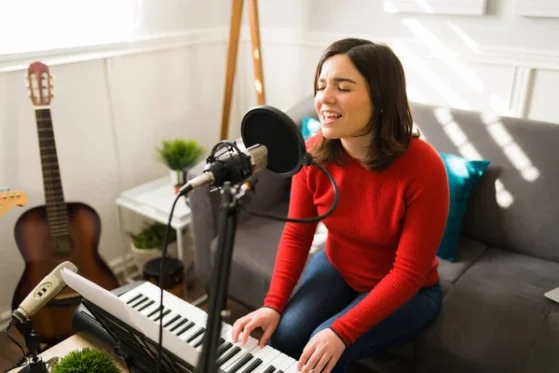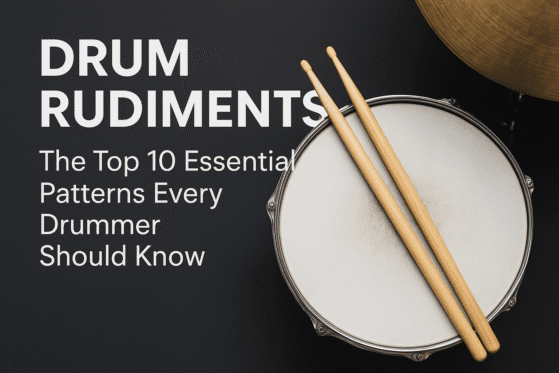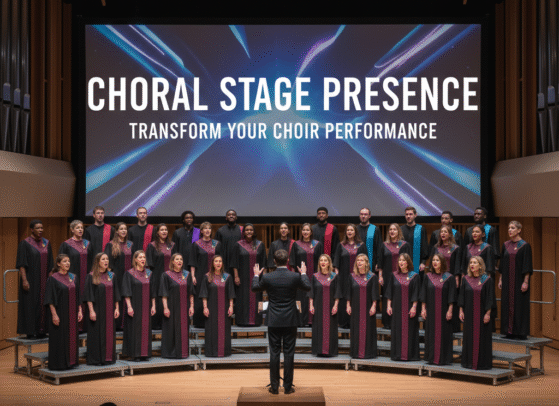Sing and Play an Instrument at the Same Time | A Complete Guide
Learning to sing and play an instrument at the same time is one of the most rewarding musical skills you can develop. Whether you’re dreaming of performing solo, leading worship, jamming with friends, or playing in a band, the ability to accompany yourself vocally while playing opens up countless opportunities for creative expression. However, as many musicians quickly realize, being able to sing and play an instrument together isn’t as simple as it seems. It often feels overwhelming at first, as it challenges both coordination and concentration—but with the right approach and mindset, anyone can master this powerful combination.
In this comprehensive guide, we’ll walk you through step-by-step how to confidently sing and play an instrument at the same time—whether it’s guitar, piano, ukulele, or any other instrument. You’ll discover practical tips, time-tested techniques, and helpful transitions to make your musical journey more efficient, enjoyable, and ultimately more expressive.

Understanding Why It’s Challenging — But So Worth It
Before diving into the how, it’s helpful to understand the why behind the challenge. Singing and playing together is tricky mainly because it requires independent coordination — your hands and fingers are busy playing chords or riffs, while your voice must follow a different rhythm, melody, and often phrasing. On top of that, your brain is juggling divided attention between managing lyrics, breathing, vocal tone, and instrumental rhythm.
Despite these challenges, the payoff is immense. Mastering this skill improves your overall musicianship, sharpens your rhythmic sense, strengthens memory, and builds valuable confidence as a performer. Once you get comfortable, singing and playing simultaneously can feel like second nature.

Become Comfortable with Your Instrument First
The first crucial step is to establish solid control over your instrument. After all, it’s difficult to multitask if you’re still learning your chords or scales.
Spend time practicing your instrument regularly until chord changes and fingerings feel automatic.
Use a metronome to internalize steady timing.
For guitar players, focus on smooth chord transitions and consistent strumming or fingerpicking patterns.
Pianists should master basic chord shapes and simple accompaniment patterns.
The goal here is to be able to play your part confidently without consciously thinking about every finger movement. This frees your mind to focus on singing when you combine the two.
A helpful starting point is to pick simple songs with repetitive chord progressions — songs like “Let It Be” by The Beatles or “Riptide” by Vance Joy are great because they’re easy to learn and keep you from getting overwhelmed.

Learn the Vocal Line Separately
Once your instrument part feels natural, it’s time to get comfortable singing the song on its own. This step is critical because you want to know the melody, phrasing, and lyrics so well that you don’t have to think hard about them later.
Memorize the lyrics.
Practice singing with the original recording or a backing track.
Work on pitch accuracy, vocal tone, and phrasing.
When your voice knows the song inside out, it becomes easier to layer it with your instrument playing.

Break the Song Into Manageable Sections
Trying to sing and play an entire song at once can be daunting. Instead, break the song into smaller, manageable parts such as the verse, chorus, or bridge.
Start with the chorus if it repeats often, as familiarity helps.
Loop just a few bars at a time.
Build confidence in each section before moving on.
Gradually, as you master each part individually, you’ll find it easier to connect them into a full performance.

Slow Down and Use a Metronome
When you combine singing and playing, it’s natural to feel rushed or lose rhythm. To counter this, slow down the tempo considerably and use a metronome or slow backing track.
Focus on synchronizing your voice with your instrument.
It’s perfectly fine if your singing wavers or the rhythm feels unnatural at first.
Practice at 50-60% of the original speed to build coordination.
Only speed up when both parts feel steady and comfortable.

Simplify Your Instrumental Part If Needed
To make the process less intimidating, don’t hesitate to simplify the instrumental part while you focus on coordination.
Instead of complex strumming patterns, play simple whole-note or half-note chords.
On piano, try playing only root notes or basic triads.
Once the singing feels steady, gradually add more rhythmic and harmonic complexity.
Simplifying the accompaniment lets you internalize the song’s structure without overloading your brain.

Loop and Repeat
A powerful method to build muscle memory is to loop small segments repeatedly.
Play a short phrase, sing that part, and repeat it 10-15 times.
Don’t rush to move on until you can do it smoothly and confidently.
Repetition helps your fingers and voice learn to work together seamlessly.

Focus on Phrasing and Breathing
As your coordination improves, shift your attention to musical expression.
Enunciate lyrics clearly and add emotion to your singing.
Maintain good posture to support breath control.
Use natural breath marks within the song to avoid running out of air.
Good breathing technique is essential for singing well, so avoid slouching or tensing up while playing.

Record Yourself and Reflect
Recording your practice sessions is invaluable.
Use your phone or a simple recorder to capture your singing and playing.
Listen critically: Are you staying in time? Is your pitch steady?
Identify sections where your coordination falters and focus your practice there.
This feedback loop accelerates progress and boosts your confidence as you notice improvement.

Perform as Often as Possible
Ultimately, live practice solidifies this skill.
Play for friends or family.
Join open mics or online jams.
Take opportunities to perform during church, school, or social gatherings.
The more you sing and play in front of others, the more natural it becomes — and even mistakes become valuable learning experiences.

Taking It to the Next Level | Advanced Tips
Once you have the basics down, you can experiment with more advanced skills:
Work on rhythmic independence by practicing songs where your instrument rhythm contrasts with your vocal rhythm.
Incorporate vocal exercises while playing scales or patterns.
Learn to adjust your playing dynamics to better support your voice.
Explore harmonies by adding backup vocals or counter-melodies.

Which Instrument Is Best for Singing Along?
Some instruments lend themselves better to singing:
Guitar is versatile and widely used for singer-songwriters.
Ukulele offers light chords and a gentle sound, making it beginner-friendly.
Piano/keyboard visually lays out notes and supports learning music theory.
Autoharp or keyboard pads allow minimal finger movement while singing.
Choose the instrument you enjoy and feel motivated to practice daily.

Final Thoughts
Singing and playing at the same time is a skill that anyone can develop with patience, focus, and smart practice. By starting slowly, simplifying your approach, and building confidence piece by piece, you’ll move steadily toward performing with ease and musicality.
Remember, the journey is just as important as the destination. Celebrate your progress, no matter how small, and enjoy making music that connects heart and hands. To get personalized guidance and support on this journey, consider joining The Mystic Keys — where expert instructors help you master the art of singing and playing simultaneously with tailored lessons designed for every level. Let The Mystic Keys be your partner in unlocking your full musical potential!








